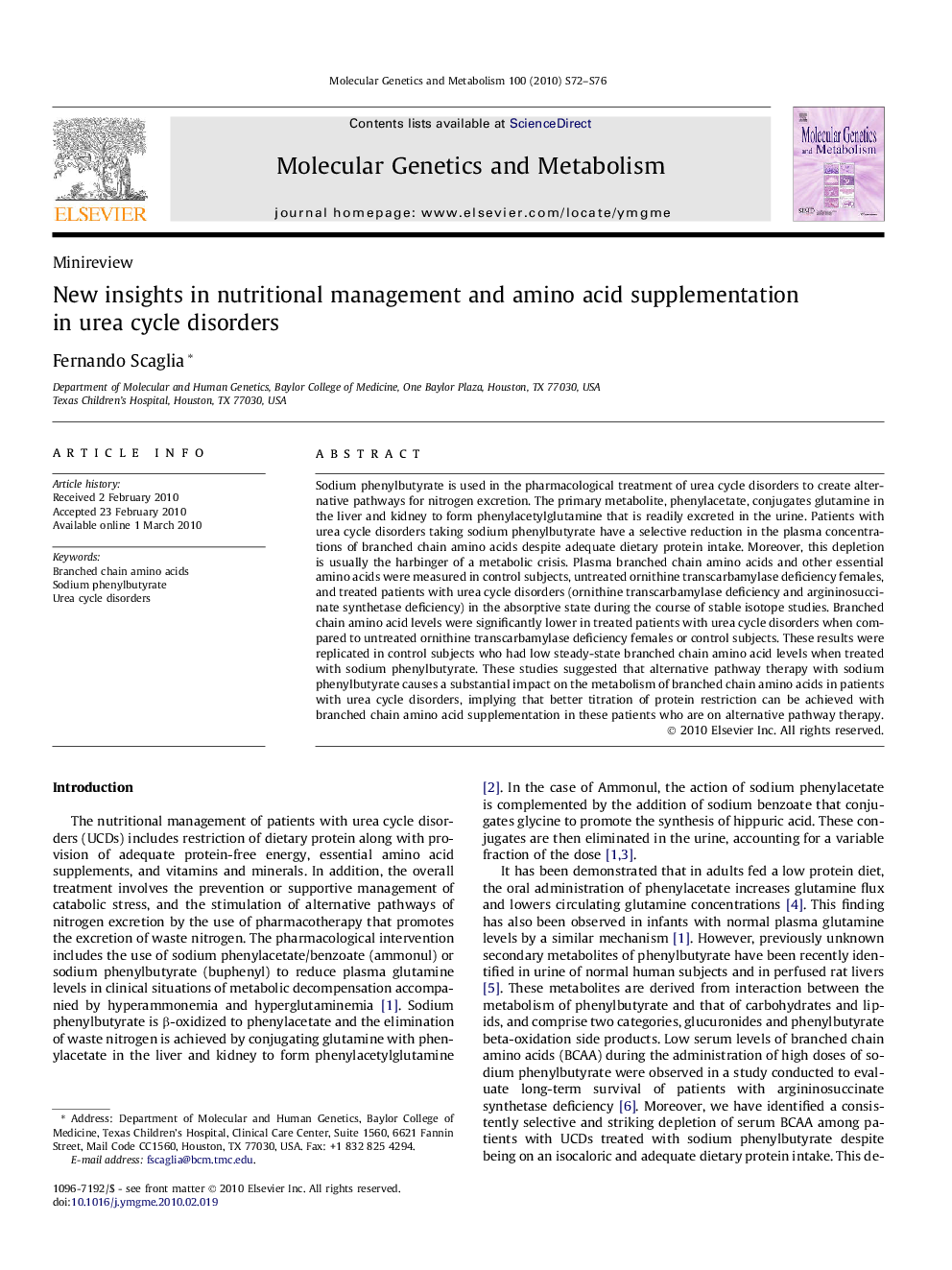| Article ID | Journal | Published Year | Pages | File Type |
|---|---|---|---|---|
| 1999595 | Molecular Genetics and Metabolism | 2010 | 5 Pages |
Sodium phenylbutyrate is used in the pharmacological treatment of urea cycle disorders to create alternative pathways for nitrogen excretion. The primary metabolite, phenylacetate, conjugates glutamine in the liver and kidney to form phenylacetylglutamine that is readily excreted in the urine. Patients with urea cycle disorders taking sodium phenylbutyrate have a selective reduction in the plasma concentrations of branched chain amino acids despite adequate dietary protein intake. Moreover, this depletion is usually the harbinger of a metabolic crisis. Plasma branched chain amino acids and other essential amino acids were measured in control subjects, untreated ornithine transcarbamylase deficiency females, and treated patients with urea cycle disorders (ornithine transcarbamylase deficiency and argininosuccinate synthetase deficiency) in the absorptive state during the course of stable isotope studies. Branched chain amino acid levels were significantly lower in treated patients with urea cycle disorders when compared to untreated ornithine transcarbamylase deficiency females or control subjects. These results were replicated in control subjects who had low steady-state branched chain amino acid levels when treated with sodium phenylbutyrate. These studies suggested that alternative pathway therapy with sodium phenylbutyrate causes a substantial impact on the metabolism of branched chain amino acids in patients with urea cycle disorders, implying that better titration of protein restriction can be achieved with branched chain amino acid supplementation in these patients who are on alternative pathway therapy.
